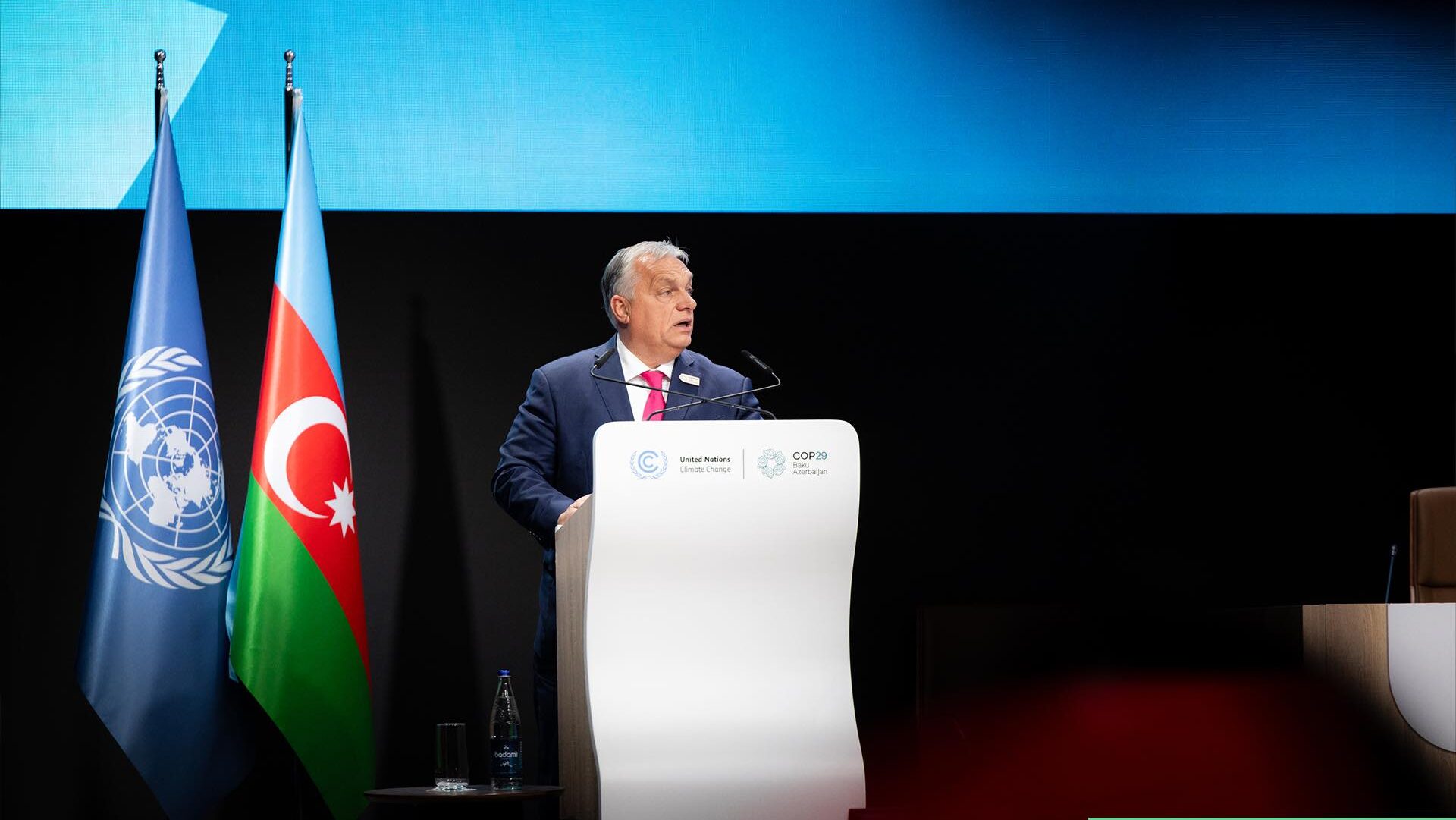Is Brussels Yielding to Pressure on Common Agricultural Policy? – The European Conservative

Report on the Proposed EU Multiannual Financial Framework (2028-2034) and its Implications for Sustainable Development Goals
1.0 Introduction: Reassessment of EU Budgetary Strategy
The European Commission has indicated a willingness to revise its proposal for the Multiannual Financial Framework (MFF) for 2028–2034. This development, confirmed by Commissioner for Cohesion and Reforms Raffaele Fitto on October 16th, follows significant pressure from political and regional stakeholders. The core of the debate centers on a proposed consolidation of the Common Agricultural Policy (CAP) and cohesion funds, a move that carries substantial implications for the European Union’s capacity to achieve its Sustainable Development Goals (SDGs).
2.0 Proposed Reform and its Conflict with SDG Principles
The Commission’s initial proposal involved merging agricultural and regional subsidies into a single €865 billion fund, managed through national plans. This structural change has been criticized for its potential to undermine key SDG principles.
2.1 Centralization vs. Multi-Level Governance (SDG 16 & 17)
- Critics, including regional authorities and farming communities, argue the reform constitutes a “de facto renationalisation” of EU policy.
- This shift from local and regional to national-level decision-making is seen as a threat to the principle of effective and inclusive institutions at all levels, as outlined in SDG 16 (Peace, Justice and Strong Institutions).
- Furthermore, it challenges the multi-stakeholder approach essential for SDG 17 (Partnerships for the Goals), by potentially marginalizing local actors crucial for implementing sustainability projects.
2.2 Impact on Key Sustainable Development Goals
The proposed merger directly affects the EU’s ability to target funding towards specific SDGs:
- Cohesion Funds: These are vital for addressing regional disparities and promoting inclusive growth, directly supporting SDG 1 (No Poverty), SDG 8 (Decent Work and Economic Growth), SDG 10 (Reduced Inequalities), and SDG 11 (Sustainable Cities and Communities). Centralized management risks diluting the focus on specific regional needs.
- Common Agricultural Policy (CAP): The CAP is a primary instrument for advancing SDG 2 (Zero Hunger) by ensuring food security and promoting sustainable agriculture. It also plays a critical role in SDG 12 (Responsible Consumption and Production), SDG 13 (Climate Action), and SDG 15 (Life on Land). Stakeholders fear that national-level management may prioritize broad economic goals over targeted environmental and sustainability outcomes.
3.0 Political and Institutional Response
The pushback against the proposal has been significant, most notably from the European Parliament. The European People’s Party (EPP), the largest parliamentary group, has threatened to reject the budget unless modifications are made. This stance represents a shift, positioning the group as a defender of decentralized governance models that empower farmers and rural communities to contribute to the SDGs.
3.1 Internal Political Dynamics
- The EPP’s position is influenced by electoral pressures and a desire to support rural constituencies integral to achieving goals related to land use and food production (SDG 2, SDG 15).
- Divisions persist within the group, with delegations from Italy, Poland, Bulgaria, and Romania advocating for a comprehensive revision, while the German delegation favors a more gradual approach.
4.0 Conclusion: Towards an SDG-Aligned Financial Framework
Commissioner Fitto’s statement that the Commission is “open to improving that part of the proposal” signals that the institutional pressure has been effective. The ongoing debate underscores a fundamental challenge: balancing administrative efficiency with the need for inclusive, multi-level governance. The final structure of the MFF 2028-2034 will be a determining factor in the EU’s ability to effectively fund and implement its commitments under the 2030 Agenda for Sustainable Development.
1. Which SDGs are addressed or connected to the issues highlighted in the article?
The article discusses issues related to EU funding for agriculture and regional development, as well as the governance structures for these funds. Based on this, the following Sustainable Development Goals (SDGs) are relevant:
-
SDG 2: Zero Hunger
This goal is relevant due to the central discussion around the “Common Agricultural Policy (CAP)”. The CAP is a primary instrument for supporting farmers and agricultural production within the EU, which directly relates to ensuring sustainable food production systems and supporting food producers.
-
SDG 10: Reduced Inequalities
The mention of “cohesion funds” and “regional subsidies” connects directly to this SDG. These funds are designed to reduce economic and social disparities between different regions within the EU, aligning with the goal of reducing inequality within and among countries.
-
SDG 16: Peace, Justice and Strong Institutions
The core of the article is a debate about governance and institutional power. The conflict over whether decision-making should be centralized in “national governments” or remain with “local authorities” speaks to the need for effective, accountable, and inclusive institutions at all levels. The article highlights the political pressure and negotiations involved in shaping these institutions.
-
SDG 17: Partnerships for the Goals
The entire context of the article—negotiations over the EU’s “Multiannual Financial Framework (MFF)” involving the European Commission, European Parliament, and member states—exemplifies a multi-stakeholder partnership. The debate over merging funds is an issue of policy coherence for sustainable development, a key aspect of SDG 17.
2. What specific targets under those SDGs can be identified based on the article’s content?
Based on the issues discussed, the following specific targets can be identified:
-
Under SDG 2: Zero Hunger
- Target 2.4: By 2030, ensure sustainable food production systems and implement resilient agricultural practices. The funding and structure of the Common Agricultural Policy (CAP), a central topic of the article, are critical for achieving this target by supporting farmers and shaping agricultural practices across the EU.
-
Under SDG 10: Reduced Inequalities
- Target 10.2: By 2030, empower and promote the social, economic and political inclusion of all. The EU’s “cohesion funds” are a direct mechanism for promoting the economic inclusion of less developed regions, and the debate over how these funds are managed is central to achieving this target.
-
Under SDG 16: Peace, Justice and Strong Institutions
- Target 16.6: Develop effective, accountable and transparent institutions at all levels. The criticism that the proposed reform would amount to a “de facto renationalisation” and the call for changes reflect a demand for accountable and transparent management of EU funds.
- Target 16.7: Ensure responsive, inclusive, participatory and representative decision-making at all levels. The article highlights the conflict between local and national control, with “Regions and farmers” warning against the transfer of “decision-making power from local authorities to national governments.” This directly relates to ensuring decision-making is participatory and representative at the local level.
-
Under SDG 17: Partnerships for the Goals
- Target 17.14: Enhance policy coherence for sustainable development. The Commission’s proposal to “merge agricultural and regional subsidies into a single €865 billion fund” is an attempt, however controversial, to alter the policy framework for development, directly engaging with the concept of policy coherence.
3. Are there any indicators mentioned or implied in the article that can be used to measure progress towards the identified targets?
The article, being a political news piece, does not mention official SDG indicators. However, it implies several qualitative and quantitative measures that could be used to track progress:
-
For SDG 2 & 10:
An implied indicator is the total budget and allocation mechanism of the “single €865 billion fund” that would merge the Common Agricultural Policy and cohesion funds. The final size of this fund and the rules governing its distribution to farmers and regions would be a direct measure of the EU’s financial commitment to sustainable agriculture and regional equality.
-
For SDG 16:
A key implied indicator is the level of participation of local and regional authorities in the management of EU funds. The article explicitly mentions the debate over “transferring decision-making power from local authorities to national governments.” Progress towards Target 16.7 could be measured by analyzing the legal provisions in the final MFF that define the roles and powers of local versus national bodies in managing these funds.
-
For SDG 17:
The final structure of the Multiannual Financial Framework (MFF) 2028–2034 serves as an indicator for policy coherence. Whether the agricultural and cohesion funds remain separate or are merged as proposed would be a direct outcome and measure of the EU’s approach to integrating different policy areas for development.
4. Create a table with three columns titled ‘SDGs, Targets and Indicators” to present the findings from analyzing the article.
| SDGs | Targets | Indicators (Implied from the article) |
|---|---|---|
| SDG 2: Zero Hunger | 2.4: Ensure sustainable food production systems and implement resilient agricultural practices. | The budget and allocation rules for the Common Agricultural Policy (CAP) within the new MFF. |
| SDG 10: Reduced Inequalities | 10.2: Empower and promote the social, economic and political inclusion of all. | The budget and distribution mechanism of cohesion funds aimed at reducing regional disparities. |
| SDG 16: Peace, Justice and Strong Institutions | 16.7: Ensure responsive, inclusive, participatory and representative decision-making at all levels. | The degree of decision-making power legally granted to local and regional authorities versus national governments in the allocation of EU funds. |
| SDG 17: Partnerships for the Goals | 17.14: Enhance policy coherence for sustainable development. | The final institutional design of the MFF, specifically whether agricultural and regional funds are merged into a single instrument or kept separate. |
Source: europeanconservative.com

What is Your Reaction?
 Like
0
Like
0
 Dislike
0
Dislike
0
 Love
0
Love
0
 Funny
0
Funny
0
 Angry
0
Angry
0
 Sad
0
Sad
0
 Wow
0
Wow
0
















































/environment-climate-change-and-health-(ech)/water-sanitation-hygiene-and-health-(wsh)/landfill-tuvalu-36092.tmb-1200v.jpg?sfvrsn=5c21fe40_1#)

.jpg.webp?itok=0ZsAnae9#)


























